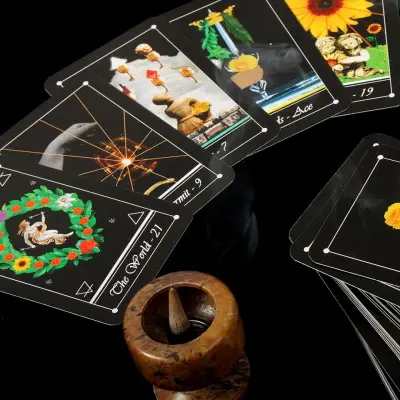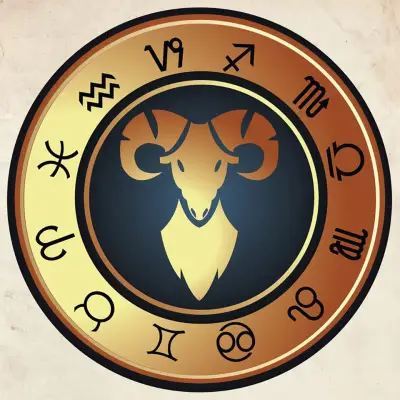In the present day, ghosts are not considered a substantial threat. Tales of ghosts are usually reserved for children’s horror stories or spooky tales to be told around the campfire on Halloween. However, despite the overall consensus that ghosts aren’t real, the idea of ghosts still frightens many of us. While many attribute fear of ghosts to the horror stories that we hear as children, is it possible that we are still afraid of ghosts because a little part of us thinks they could be real? After all, there have been many supposed sightings of ghosts in the UK throughout history.
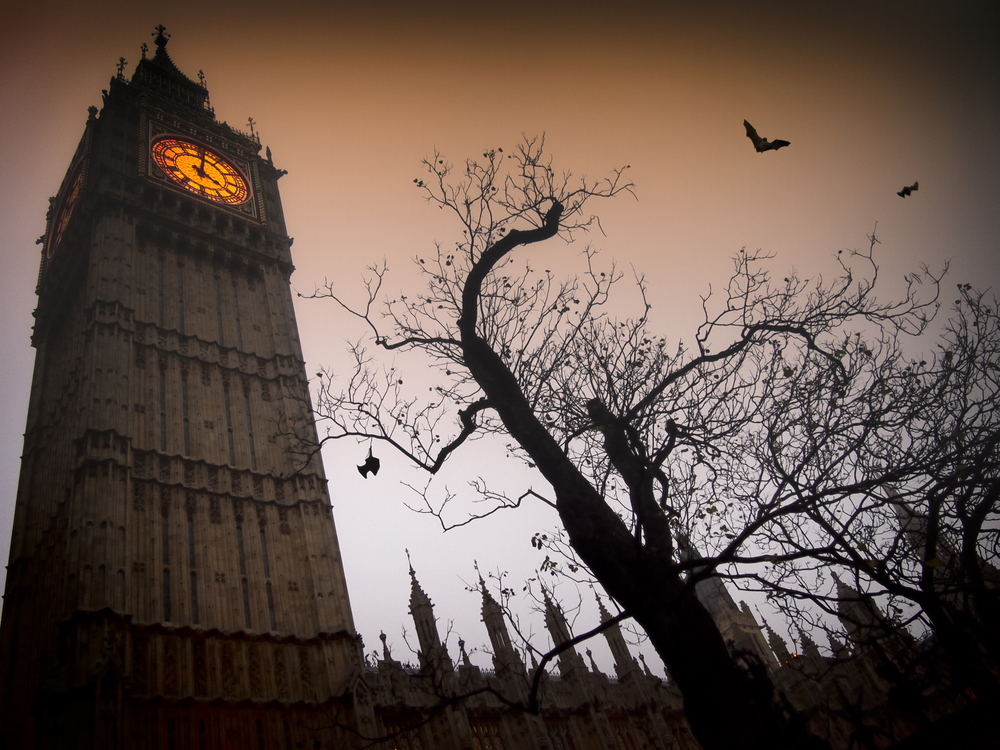
Jump to:
While many of us may think of a white sheet with two holes cut out where the eyes should be, this is not what a ghost typically looks like if previous sightings are to be believed. Ghosts may take various forms. The variety of ghostly apparitions is vast, from shackled skeletons clanking through graveyards to spectral balls of light emitting a sulphurous odour. There are legless ghosts, benevolent spirits, malevolent phantoms, headless spectres, and traditional legendary apparitions. Some of these entities are well-documented, while others are witnessed only by a select few.
While ghosts can take many forms, some of their most surprising appearances look like famous historical figures. Whether the ghosts are merely mimicking the famous figures' appearance or are indeed the reincarnated spirit of that person is largely open to interpretation. However, one thing is certain: the sheer volume of famous ghost sightings throughout British history is actually quite alarming.
Britain has long been fascinated with ghosts, as evidenced by their frequent appearance in folklore. But are some of these UK ghost stories real? Let’s delve into some of the most haunted places in Britain and the famous ghost stories attached to them.
Recommended for you!
Best SellersThe Tower of London
While the Tower of London may be one of the most culturally significant sights in the UK, it is also said to be one of the most haunted places in Britain. Standing majestically on the north bank of the River Thames, the Tower of London houses centuries of history within its stone walls. However, the walls harbour more than just history. There have been numerous supposed ghost sightings in the Tower of London. In fact, there have been so many sightings that it’s difficult to name only a few. Regardless, here are some of the most famous ghost tales of the Tower of London:
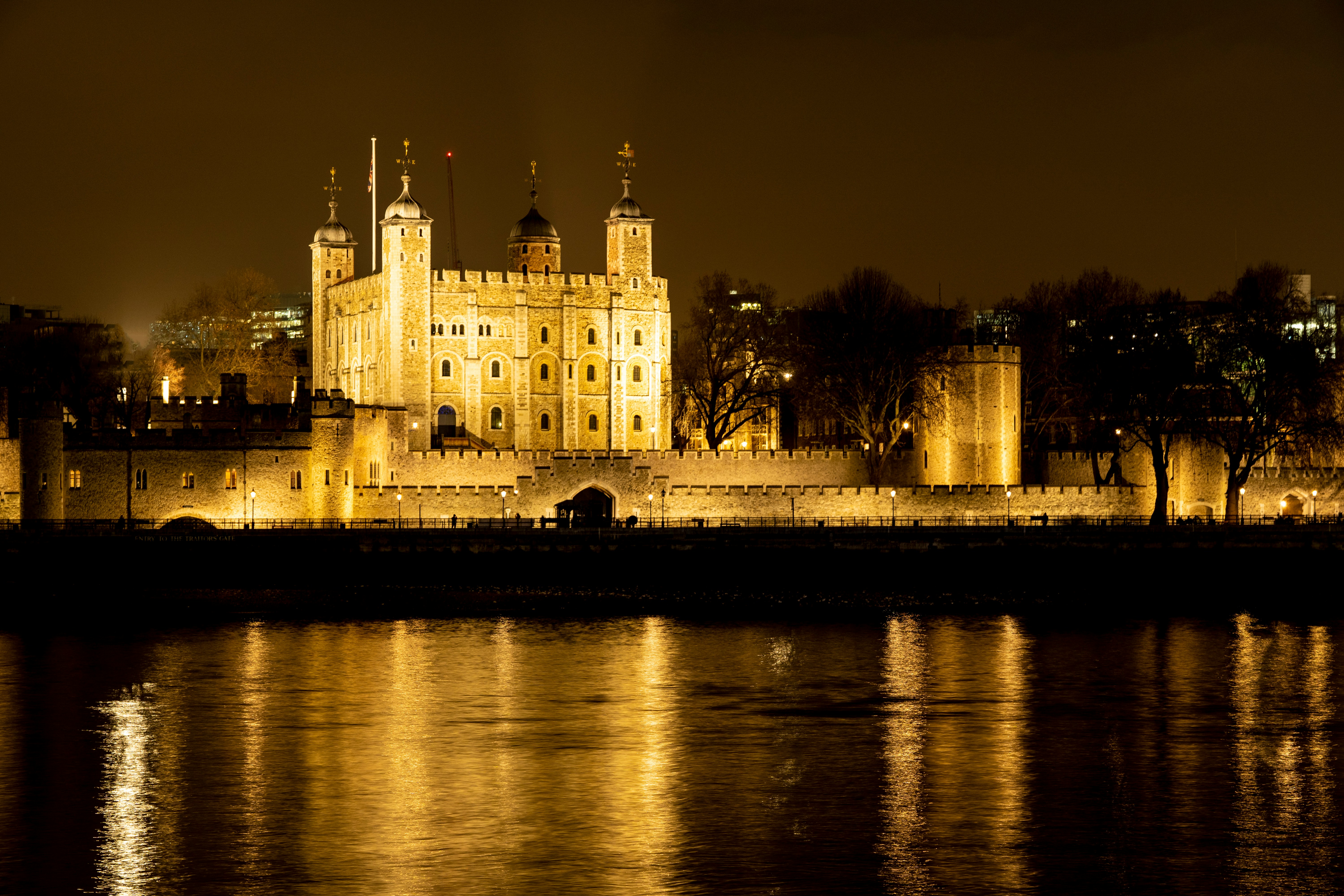
Anne Boleyn
As far as famous ghost spirits go, Anne Boleyn’s ghost is definitely one of the most infamous. There have been numerous sightings all over the country, which led to her being declared the most well-travelled ghost in all of Britain. Unfortunately for those who see her, she’s also seen the way she was after Henry VIII beheaded her, with her head tucked neatly underneath her arm.
One legend states that Anne Boleyn is buried at Salle Church, which may explain why there is a popular belief that she still haunts the area. There have been numerous sightings of her ghost in this location.
However, Anne Boleyn’s most famous afterlife residence must be the Tower of London. Anne Boleyn was executed in the British landmark, so it’s no surprise that her ghost is said to be haunting the site. One of her most famous sightings came in 1864. General Dundas, a military officer, reported witnessing the ghost of Anne Boleyn, appearing as a ghostly white figure, gliding towards a guard in the courtyard where she had been imprisoned before her execution. Her feet did not touch the ground. Mistaking her for a real person, the guard charged at her with his bayonet, only to pass right through her apparition. Realising he had encountered a ghost, the guard promptly fainted.
Initially, the military court-martial intended to charge the guard with fainting on duty and abandoning his post. However, General Dundas testified at the trial, saving the guard from punishment.
Another intriguing tale involves a sighting in the Chapel Royal. One night, a flickering light was seen inside the chapel. The Captain of the Guard, investigating the source, climbed a ladder to look inside. He witnessed a procession of Ladies and Knights in centuries-old attire parading through the chapel, led by Anne Boleyn, whom he recognised from her portraits. The only other detail of this sighting is that she appeared to be headless.
Additionally, Anne Boleyn’s ghost is said to be seen walking through the church near the Tower, moving down the aisle towards her grave beneath the altar.
Sir Walter Raleigh
Sir Walter Raleigh was sent to the tower for imprisonment, not once, not twice, but three times! The first time he was imprisoned was for a secret marriage, which went against Queen Elizabeth I's wishes. The second time he was imprisoned was due to a conspiracy that linked him to Queen Elizabeth I’s death. His final imprisonment was because, during an expedition to South America, he attacked a Spanish outpost, violating peace treaties between England and Spain and angering King James I.
During one period of confinement, Sir Walter Raleigh spent over 13 years in the Bloody Tower, where he even attempted suicide. His final imprisonment at the Tower of London was in the Beauchamp Tower, beginning in 1603 before he was ultimately beheaded outside the Palace of Westminster.
While the exact details of Sir Walter’s ghostly appearance are rather sparse, a running theme with some of these historical ghost sightings is that his ghost is said to have been sighted wandering around the Bloody Tower as well as along the battlements, which are now known as Raleigh’s Walk.
Henry VI
Henry VI is amongst the most famous afterlife presences at the Tower of London. Henry VI met his end as the result of a real-life Game of Thrones. He stood to inherit both the English and French thrones, but the House of York imprisoned him during the War of the Roses. Shortly after Edward IV seized the throne, Henry VI was murdered at the altar in the King’s Private Chapel in 1471, close to midnight.
Henry’s ghost is believed to haunt the Wakefield Tower, appearing at the stroke of midnight: the time of his execution.
Lady Jane Grey
Lady Jane Grey ascended to the throne after the death of King Edward VI, the son of King Henry VIII. She became the English queen with the shortest reign in history, lasting only nine days.
In his final will, Edward designated Lady Jane Grey as his heir, bypassing his half-sister Mary. However, her reign was short-lived, as the council soon declared Catholic Mary as the rightful ruler of England. In 1554, Lady Jane Grey and her husband were executed in the notorious Tower Green by Mary Tudor, who many people know as the famous “Bloody Mary”. To this day, Jane's spectral figure is said to wander the battlements: a lonely, solitary figure incurring nightmares in all that gaze upon her.
The Bear
Potentially one of the most unusual ghost sightings, but still one of the most famous, is the famous bear. Henry III housed his menagerie of wild animals at the Tower of London, which may indicate why a number of spectral animals have been heard at the tower over the years. Some of the animals include monkeys, lions and horses. However, only one has actually been seen: the famous bear.
The legend goes that, one night, a guard at the Tower claimed a ghostly bear charged him. The guard attempted to bayonet the intimidating animal, which reportedly kept charging at him despite his attempts to deter the animal away from his gaze. Eventually, the sword went through the bear. This appeared to vanquish the ghostly animal. The guard was carried, senseless, to his quarters, where he died two days later.
The ghost of the black bear is said to appear from behind the door of the Jewel Room. Some have theorised that the bear acts as an unofficial spiritual protector of the famous treasure of England. However, nothing is known for certain. It’s also worth noting that the Tower of London is not the only supposed sighting of the famous grizzly bear, who is also reported to have appeared near Martin Tower in 1816.
Guy Fawkes
Guy Fawkes is one of the most famous figures in British history, but he is also one of the most famous alleged ghosts of the Tower of London. It is often said that some can hear the screams and cries of the famous figure in the Council Chamber in the White Tower. Fawkes was subject to intense torture there, and prepared for his eventual execution after his failed plot to assassinate James I at Parliament in 1605.
Margaret Pole
Like Anne Boleyn, Margaret Pole’s beheading took place on Tower Green, which is slightly west of the White Tower. She was just 67 at the time of her death, but her demise is perhaps most famous as being one of the most botched executions in British history.
Margaret Pole was brought to the scaffold by Henry VIII for the crime of mothering Cardinal Pole. Cardinal Pole’s crime was opposing Henry’s self-created position as Supreme Head of the Church of England. On the scaffolding, she refused to kneel. She stated that only traitors should do so, but she was not one. As the executioner raised his axe, Margaret saw this as an opportunity to flee. As she ran, the executioner chased her, swinging his axe at her. His hacking blows eventually landed on Pole, and she was said to have died a gory and gruesome death.
Her screams of pain are said to echo through Tower Green, and a few visitors have even claimed to have seen a ghostly reenactment of the chase between the axeman and Pole.
Edinburgh Castle
Edinburgh Castle is arguably the most haunted place in Scotland. Thousands of visitors and staff members at one of Scotland’s biggest tourist attractions have reported various paranormal experiences, including sightings of apparitions, the unusual sensation of being touched or pulled, feelings of being watched, and encounters with shadowy figures. They have also noted sudden drops in temperature and overwhelming emotions.
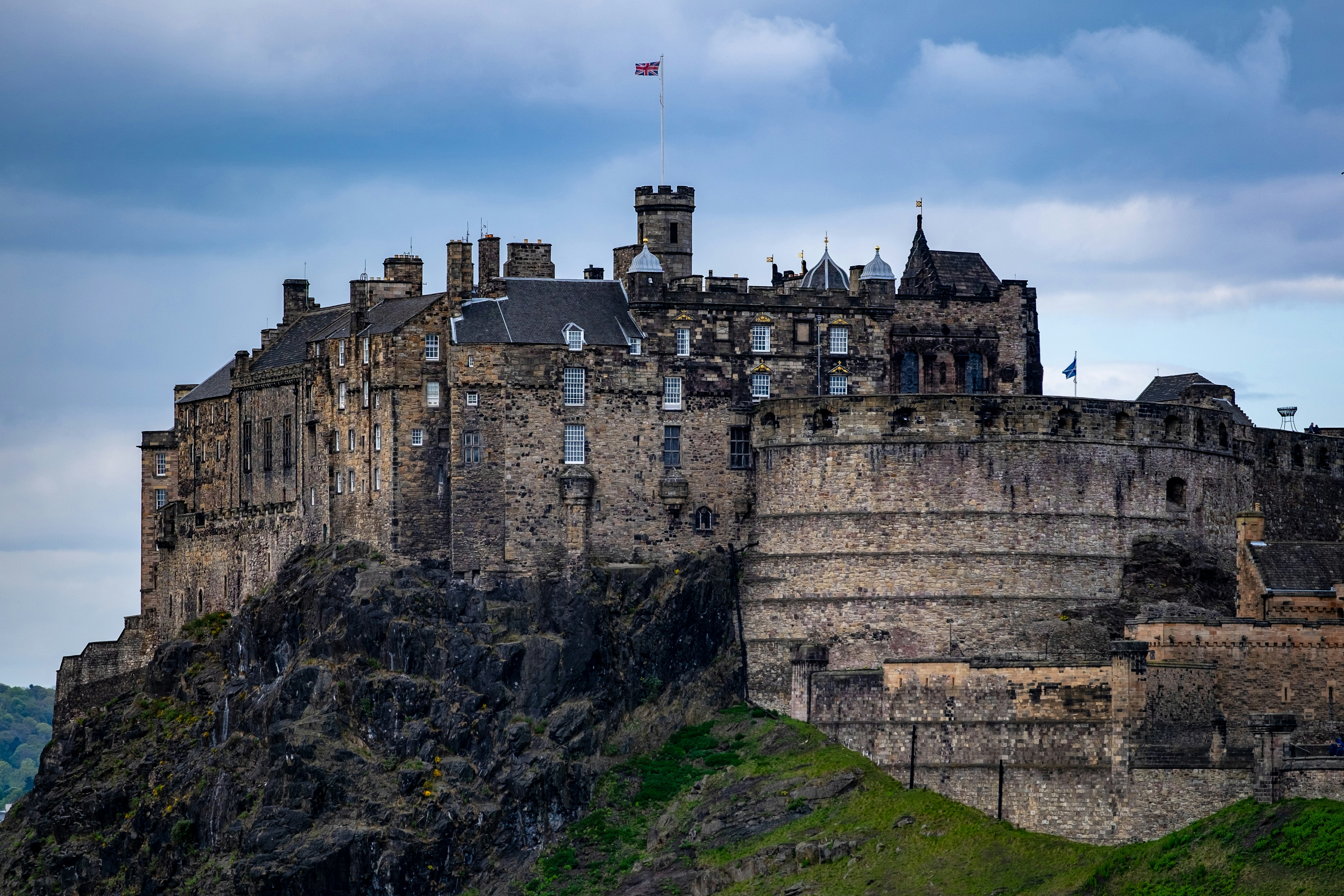
The most common experience among these reports is the sighting of apparitions. The sighting of an older man in a leather apron has been among the most popular occurrences, but there are many others.
The Grey Lady
Arguably, the most famous ghost of Edinburgh Castle is the mysterious Grey Lady. The lady, dressed like a 16th-century noblewoman, has been spotted around the older parts of the castle, and she is often said to be weeping. There are many popular theories as to who she is, one being that she is Marie de Guise, the Catholic mother and regent of Mary Queen of Scots. However, the most popular theory is that she is Janet Douglas, Lady Glamis.
Janet’s story is a tragic one. She was caught in the middle of a family feud. She was accused of witchcraft by a vengeful King James V, who harboured a grudge against her brother. Despite the widely recognised baselessness of the accusations, Janet was burned at the stake outside the castle on July 17, 1537, in front of her son. If anything could turn someone into a restless spirit, it would be such an unjust and tragic end.
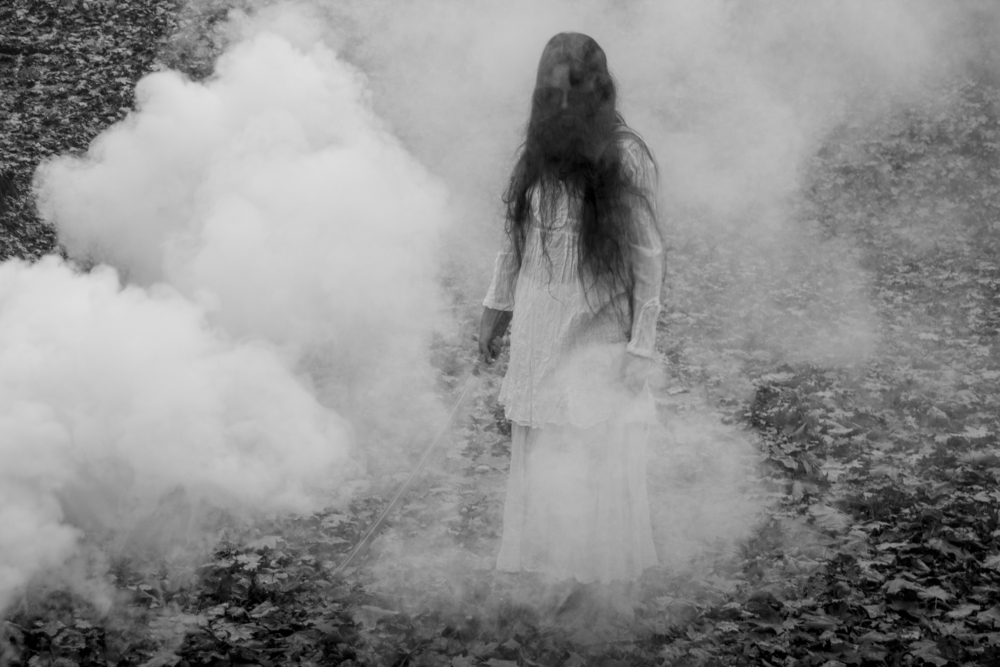
The Little Drummer Boy
The legend of the little drummer boy dates all the way back to 1650. His headless ghost was spotted playing an old Scottish war tune along the battlements. His spirit appeared when Oliver Cromwell’s men were laying siege to the castle, thus giving credence to the belief that he only appears when the castle is threatened. While this admittedly sounds rather spooky, we can find solace in the fact that the castle has not been attacked since 1745.
The Piper
A bagpipe player is one of the most iconic images of Scotland, but a lesser-known fact is that one of the most famous Scottish ghosts is a bagpipe player who is said to haunt Edinburgh Castle.
Legend has it that, many years ago, there was an underground tunnel that was discovered in the depths of the fortress. A regimental bagpiper was persuaded to explore the tunnel, playing his pipes aloud as he descended so his fellow comrades could know his whereabouts. About halfway through the tunnel, at the Tron Kirk, his playing suddenly stopped. His fellow soldiers went down to look for him. However, they could not find him. He was never seen again.
The tunnel was eventually sealed, but since his disappearance, many people have claimed that they can still hear the faint sound of bagpipes underneath the cobbles of the Old Town where the tunnel used to be.
The Castle’s Most Unluckiest Prisoner
One of Edinburgh Castle’s most famous ghosts is simply known as The Castle’s Most Unluckiest Prisoner. When you hear his story, it becomes quickly apparent why he has earned his moniker.
The tale goes that there was once a man (one of the many poor souls imprisoned in the castle’s dark, rat-infested dungeons) who was desperate to escape. He crawled into a wheelbarrow full of muck, hoping that he would be taken out of the castle and tipped into a soft dung heap. But this did not happen. The wheelbarrow was instead tipped over the battlements of the castle, and the poor man broke his neck on the castle’s rocks.
Reports of this ghostly man have stated that he carries with him a distinct smell of manure and that he tries to push visitors over the castle’s battlements to replicate his own tragic fate.
Pendle Hill
Pendle Hill in Lancashire is one of the most famously macabre places in the UK. Most famous for the Pendle Witch Trials, which saw the execution of 12 witches, there are said to be many ghostly sightings in the area. While tales of the ghostly spirits in the area are notably light on detail, many people are still scared to visit.
The Witches
It has been widely said that the Pendle Hill witches haunt the area, including some of the buildings and local villages. The site has been featured in the show ‘Most Haunted’, as well as being a prominent location in many of the country’s most popular ghost tours. Members of television crews who filmed there have reported injuries, some even claimed that they were strangled by unseen hands. The medium, Derek Acorah, claimed to have contacted Elizabeth Device, one of the accused witches, who revealed the presence of nine other spirits in the room, none of whom welcomed the crew.
Local residents avoid the hill at night due to strange occurrences and sightings of shadowy figures darting around the area.
The Ancient Ram Inn
The Ancient Ram Inn in Gloucestershire is widely regarded as the most haunted place in England. The building is reputed to have been built on an ancient pagan burial ground, and many visitors reported numerous sightings and unexplained phenomena.
The building, believed to date back to around 1145, is thought to have housed the workmen who constructed the parish church opposite. Initially serving as a priest's house, it was later converted into an inn, which operated until 1968.
After the inn closed, John Humphries purchased the building from the brewery. He dedicated his life to preserving the historic structure, tirelessly maintaining it until his death in 2017, despite the persistent efforts of former residents' spirits to disrupt his endeavours.
Anyone who has stepped foot into the building cites a troubling aura the second they enter. Some of the most famous unexplained occasions at this location include a photograph, taken in June 1999, which showed a mysterious white mist, about the height of a human, ascending the staircase.
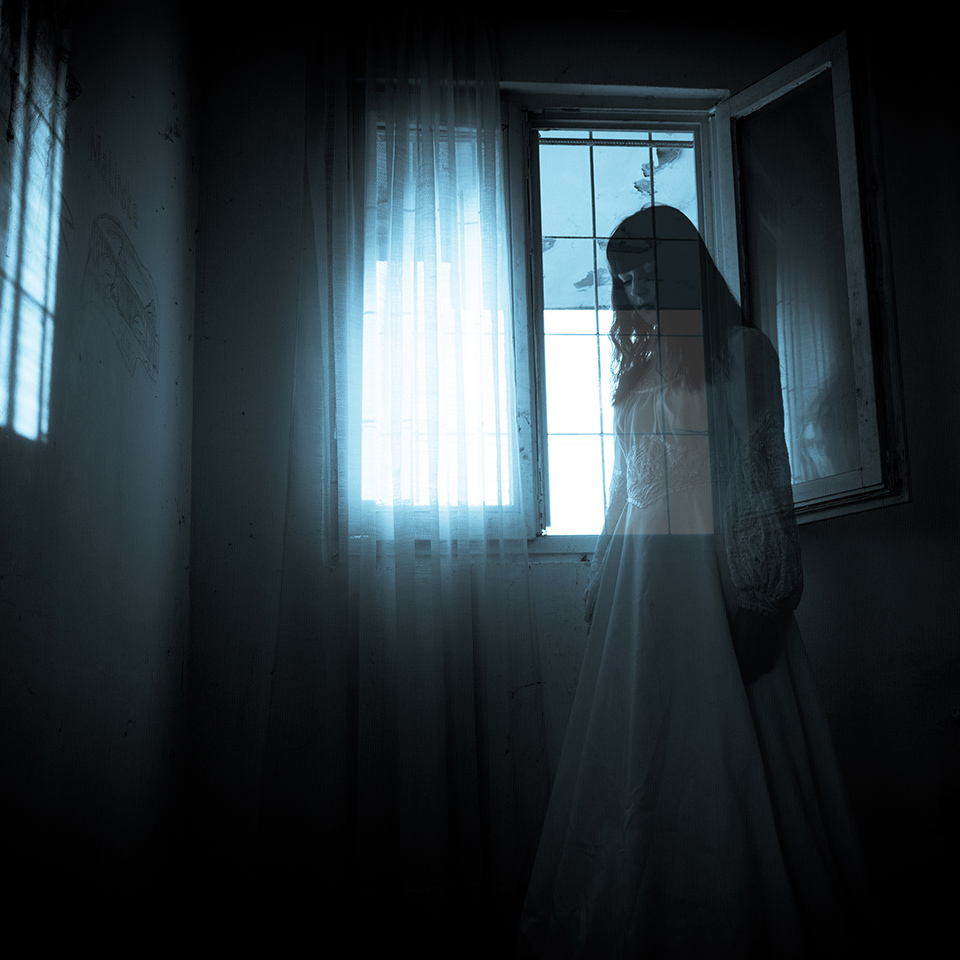
The Bishop’s Room
On the first floor of the Inn, you will find The Ram’s most terrifying room, the Bishop’s Room. Some of the most infamous occasions in this room include a ghostly cavalier who is known to materialise by the dressing table and stride purposefully across to the opposite wall; two monks have been seen shimmering in one corner, and a phantom shepherd and his dog are seen near the door.
Chillingham Castle
As its name may suggest, Chillingham Castle exudes a spooky and dark aura. The castle has seen some of the most paranormal activity of any location in the UK. Chillingham Castle has existed since the 13th century and boasts dungeons and a torture chamber. The castle has been continuously owned by the family of Earls Grey and their relations, and the Northumberland landmark is said to host some of the UK’s most famous ghost apparitions.
The White Pantry Ghost
The tale of the white pantry ghost will make your skin crawl! The ghost appears in what is known as the inner pantry. This housed the castle’s silver and a footman was employed to sleep and guard it.
One night, when he was readying himself for sleep, the footman was accosted by a mystery lady in white. The woman was very pale and begged him for water. Thinking that she was a guest of the castle, he fulfilled her request. He then realised that he had locked himself in and no visitor could have possibly entered.
The woman in white is said to still appear today and she is always longing for water, which many theorise is her longing for poison.
The Blue Boy
One of Chillingham Castle's most famous phantoms is the Blue Boy, who mysteriously vanished in the 1920s. According to legend, he appeared at the stroke of midnight in the Pink Room, with his presence heralded by the sounds of a child in pain emanating from the walls. The cries would eventually cease, and a bright halo would appear, earning him the name “Radiant Boy”.
In the 1920s, workmen discovered a boy's skeleton and fragments of blue fabric in the castle’s walls. After these remains were buried, sightings of the Blue Boy ceased, though occasional reports of a blue halo persist. Some guests have even described seeing a young boy in blue clothing typical of the 1660s.
Learn More About Ghost With Centre of Excellence
We hope these tales have not spooked you out too much! If you’re interested in learning more about ghosts and the spiritual world then why not enrol in our Paranormal Investigation Studies Course? This diploma is tailor-made for those who are keen to explore the unknown. There’s also our Mediumship Diploma Course, designed to guide you step-by-step through the different types of mediumship, helping you to develop your abilities and understand the spiritual world. Both are now available at a discounted price of £29, so what are you waiting for?

